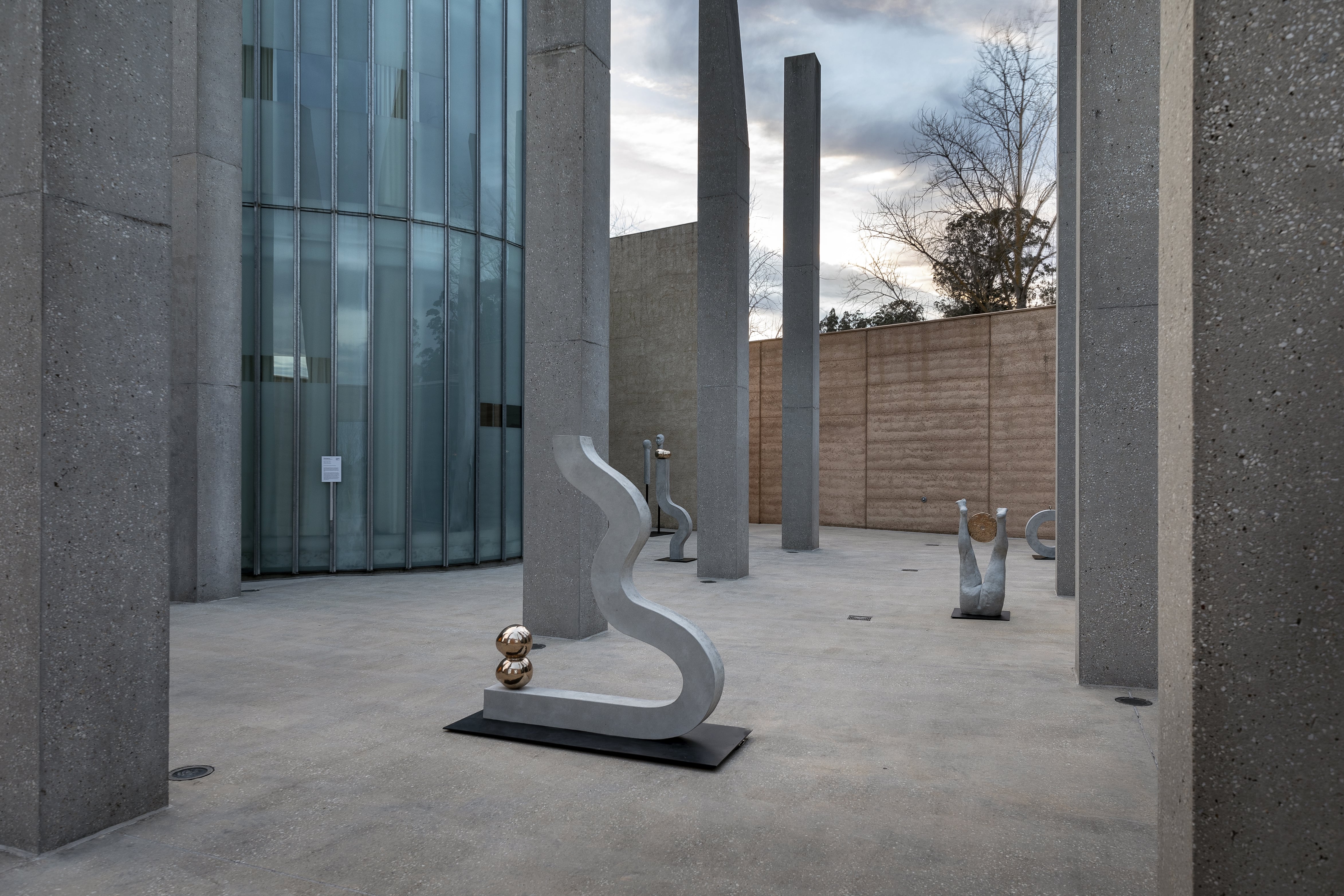
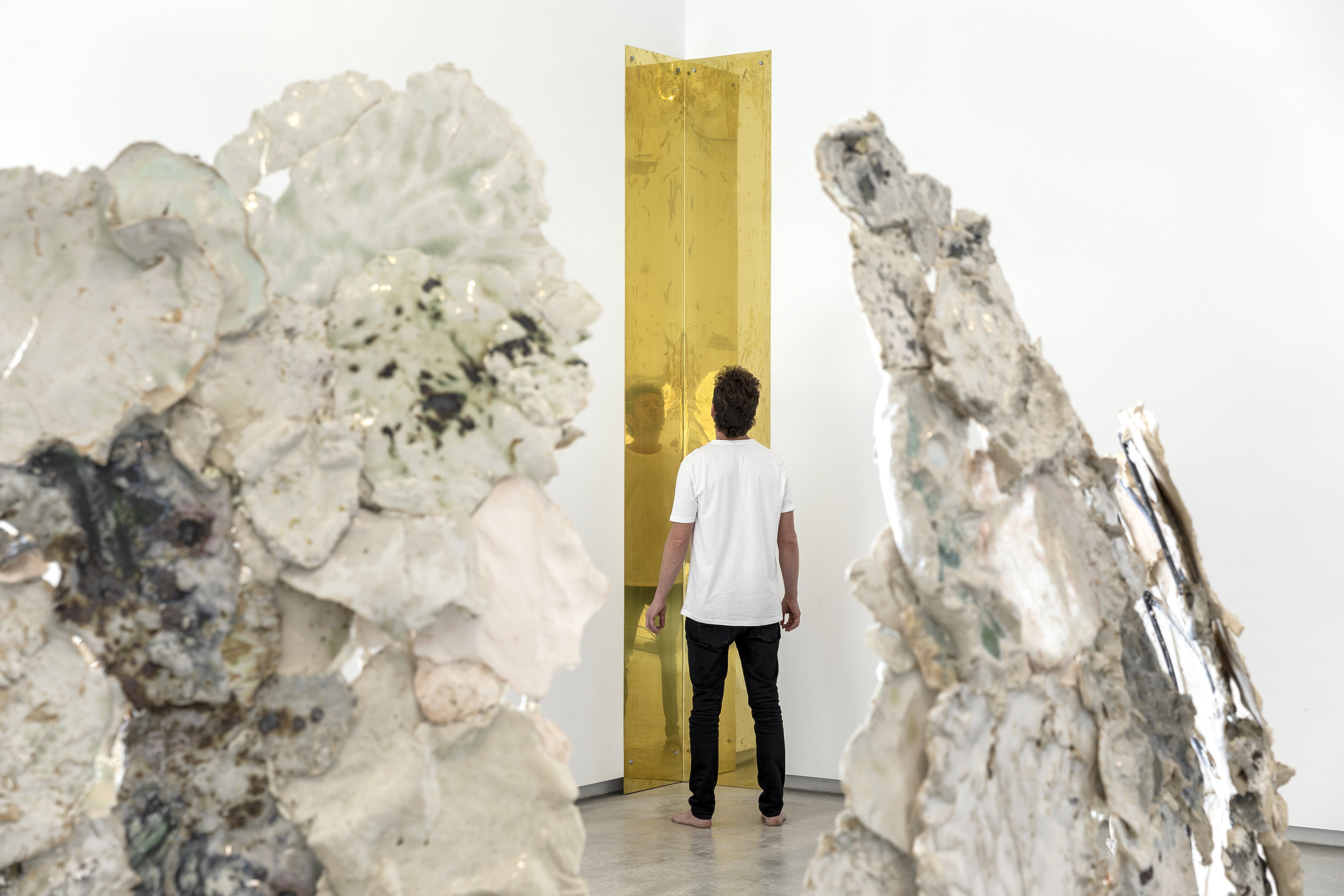
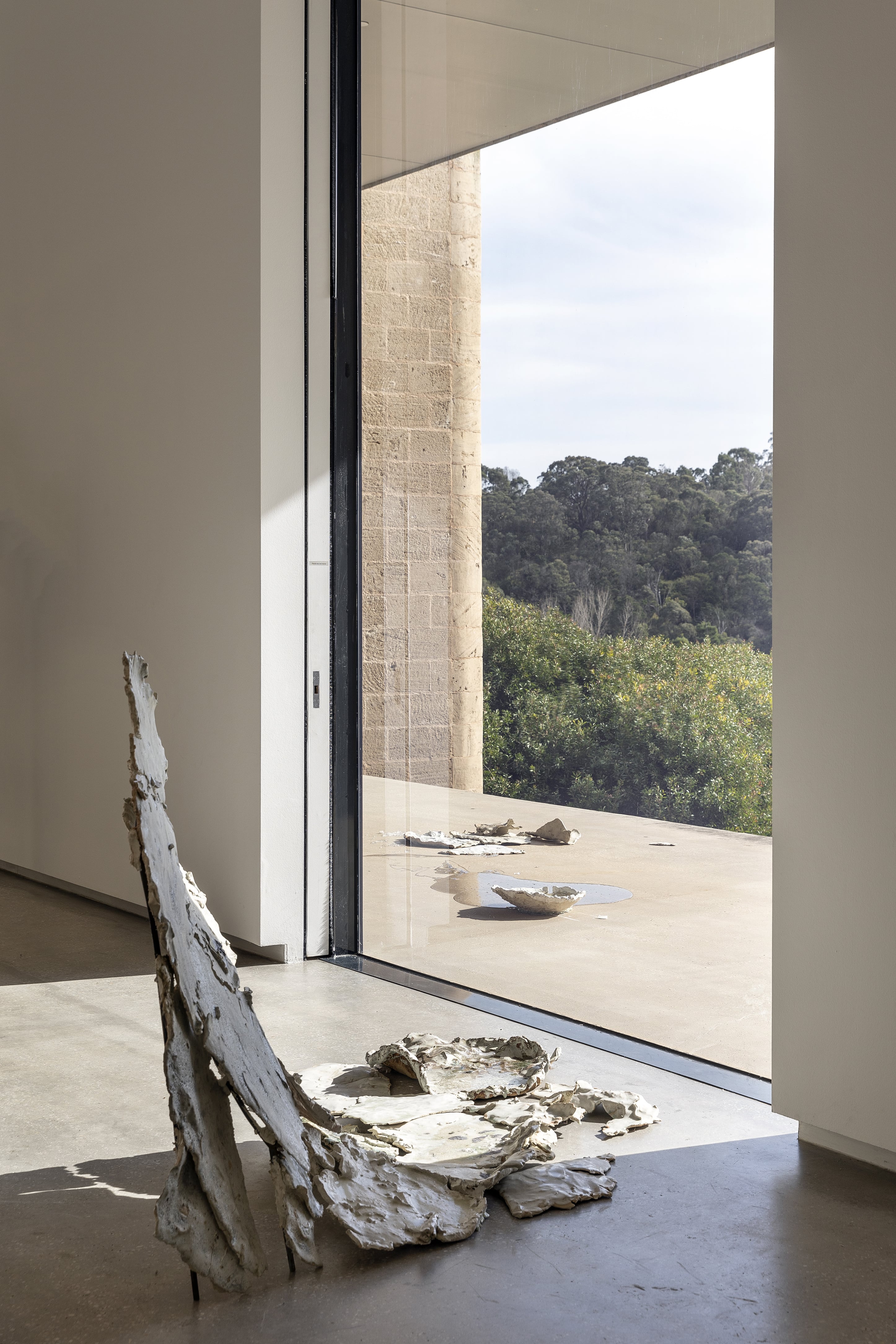
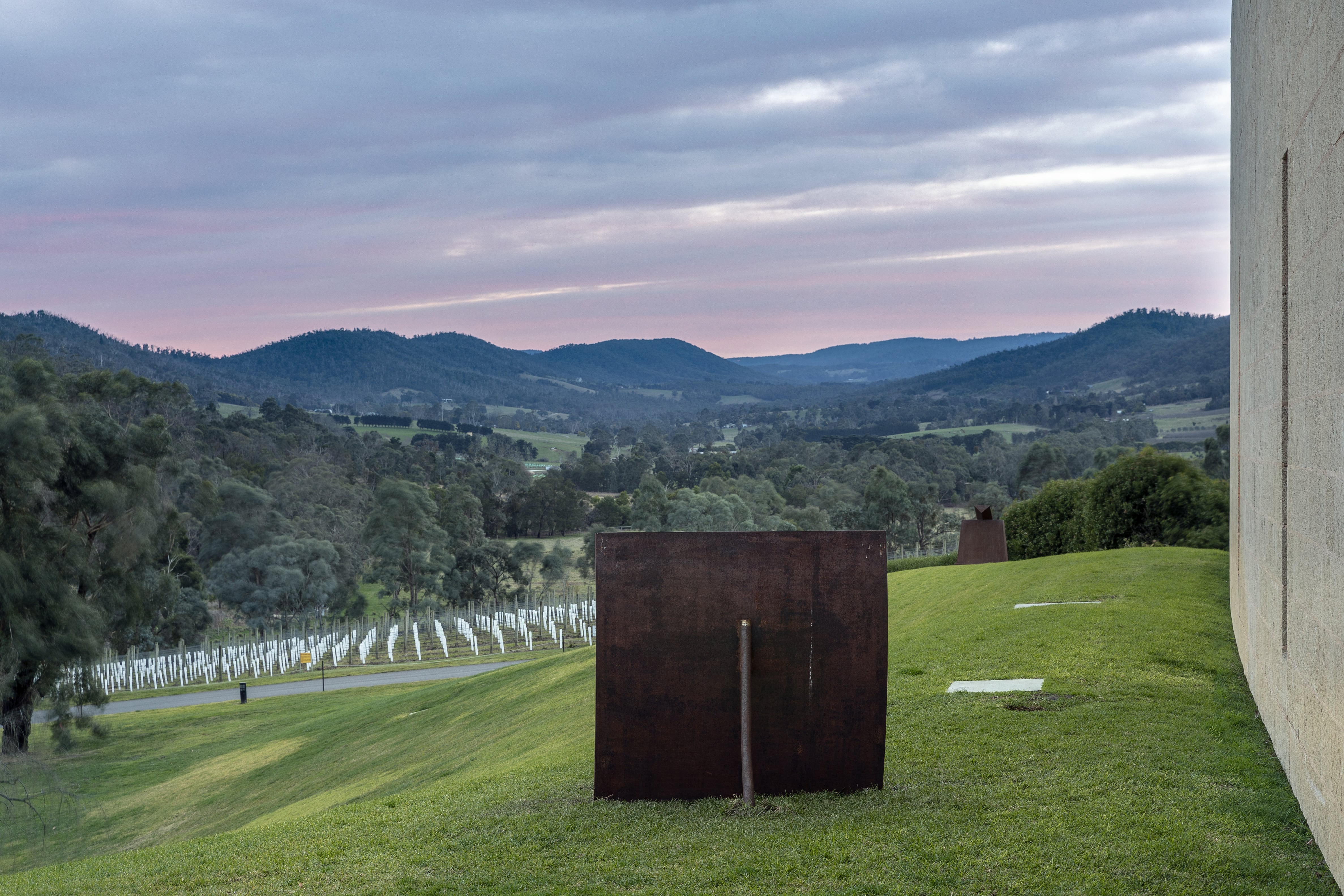
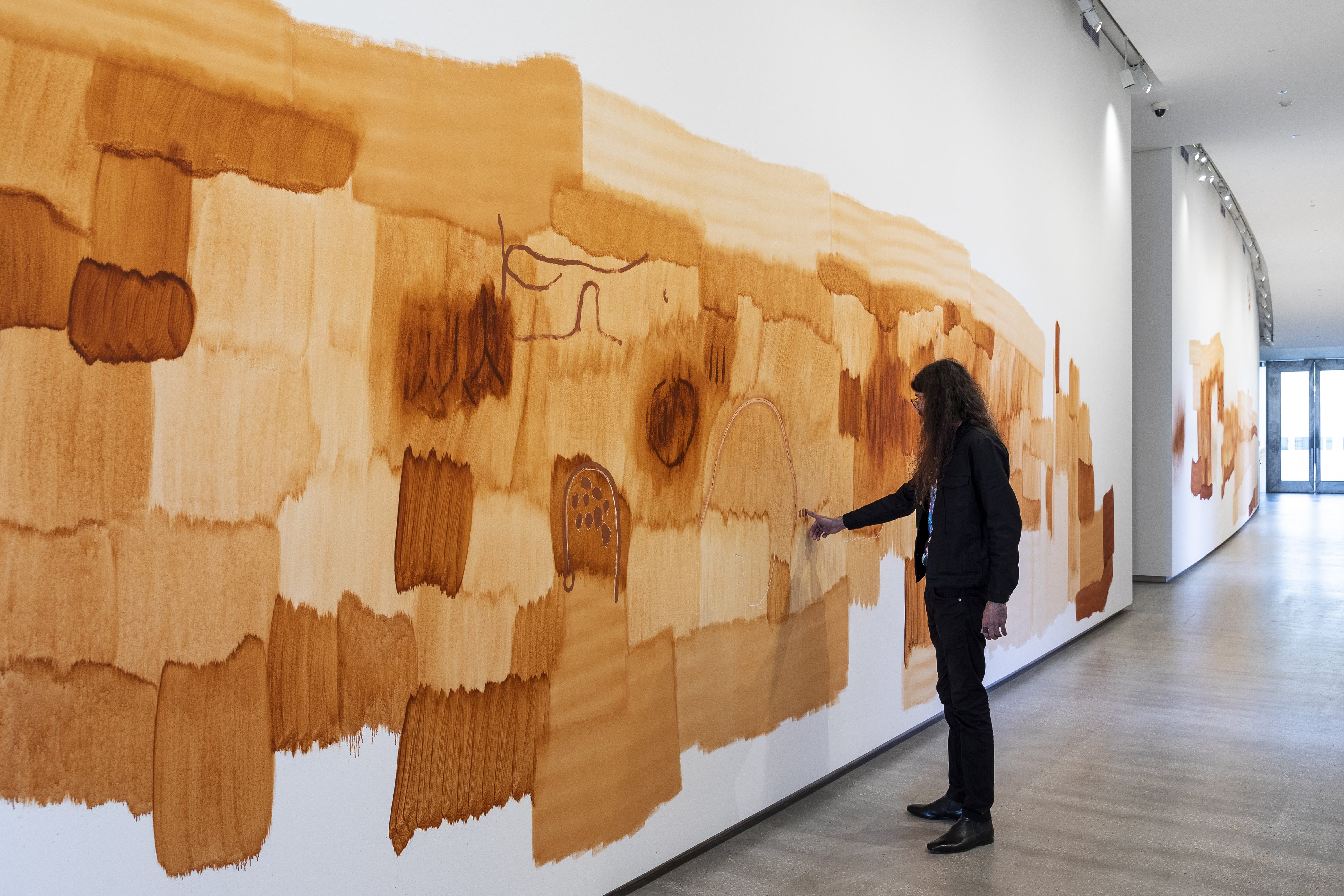
Artists: Belle Bassin (VIC); Vicki Couzens (VIC); Naomi Eller (VIC); Artists from Erub Arts (Torres Strait); Starlie Geikie (VIC); Agatha Gothe-Snape (NSW); Julie Gough (TAS); Dale Harding (QLD); Claire Lambe (VIC); Lindy Lee (NSW); Bridie Lunney (VIC); Rob McLeish (VIC); John Meade (VIC); Sanné Mestrom (VIC); Alison Murray (QLD); Michelle Nikou (SA); Kusum Normoyle (NSW); Mike Parr (NSW); Michael Snape (NSW); Hiromi Tango (NSW); Fairy Turner (WA); Michelle Ussher (NSW); Justine Varga (NSW); Isadora Vaughan (VIC)
Curator: Emily Cormack
The art scene is teeming with biennials, triennials, art fairs and blockbuster exhibitions. The TarraWarra Biennial, however, is distinguishable amongst these precisely because it is not the sprawling art festival that we have come to expect from the label. Rather, it is a considered bi-yearly exhibition developed by a guest curator, which aims to ‘identify new trends in contemporary Australian art’.1 While the title of ‘biennial’ is perhaps unnecessary, the tradition of TarraWarra Museum of Art providing an opportunity for Australian artists and curators to develop and present rigorous conceptual projects in a critical context is one that should certainly be celebrated. From Will to Form, curated by Emily Cormack, is the sixth TarraWarra Biennial since its beginning in 2006. After a rather expansive 2016 iteration, this year’s biennial takes a more traditional exhibition format, and yet is no less experimental or successful for doing so.
As evidenced by the title, Cormack is interested in exploring the creative process an artist takes to make art, and the ways in which human will can be expressed in physical form. This concept stems from Cormack’s ongoing area of research and continues ideas explored in her 2016 Primavera exhibition at the MCA in Sydney. ‘Will’ can be defined as a desire, a purpose, or the power of choosing one’s own actions. Cormack identifies five distinct fields relating to the way the ‘artist drew their will’ and structures the exhibition through these: will ‘in and of the body, in and of the land/matter, in and of the psyche, in and of itself, in and of states of release.’2 These categories are loosely constructed, and you wouldn’t necessarily pick them up without reading the catalogue. But the works stand on their own merit, too, and even without reference to Cormack’s curatorial vision it is easy to pick up several threads running throughout the exhibition.
Connections between interior and exterior space take full advantage of the museum and surrounding landscape of TarraWarra Estate. Before entering the building, you encounter Hush Hush (2018), Sanné Mestrom’s subtle yet strong sculptures in the courtyard. These concrete, bronze and steel forms interact harmoniously with the architecture of the building – these temporary interventions could easily be permanent features. Similarly, Isadora Vaughan’s Canker Sore (2018) – a site-specific, mixed-media sculpture made of ceramic, glass and crushed rock and grit from the surrounding environment, and named after a mouth ulcer – seeps from its interior position next to the north window out to the exterior like a contagious bacteria. Agatha Gothe-Snape encourages us to move outside the gallery and walk around the perimeter of the building to read the text for The Five Unknowables (2018), visible in the windows along the western wall of the museum.
Several of the artists have responded to the environment that the museum is situated in, using materials from the area or situating their work within the landscape. Outside we see Michael Snape’s formalist steel sculptures, set against the rolling hills and vineyards of the TarraWarra landscape. Inside, Starlie Gieke’s magnificent wearable sculpture, displayed in the gallery like the shed cocoon of a butterfly, sits alongside photographs of the artist wearing the construction in the natural environment around TarraWarra.
Other artists have brought the environment into the gallery. Dale Harding’s 40-metre wall drawing Wall Compositions from Memory (2018) uses red Ghangalu earth from his grandmother’s Bidjara country, mixed with his breath and saliva as the medium. The drawing, a collaboration with his cousin Jordan Upkett, reflects their shared memory of their ancestral country. Likewise, Belle Bassin has brought dirt from the surrounding area into the gallery space for In Your Place, An Empty Space (2017–18), an installation in which 'the space has been induced by mystics'.
The architecture of the gallery and its relation to the body is a focus for Bridie Lunny. Her site-specific work All For Nothing (2018) involves brass sheets placed in corners of the gallery, reflecting and mirroring the space. Through the gallery, small holes, the perfect size for a finger, are dug into the walls and filled with gold. On several occasions throughout the exhibition, a performer sings into these physical interventions, activating the site with their breath. Mike Parr also uses breath as medium in his new commission Whistle White (2018), a durational whistling performance that aims to create a continuous cycle of breath for three days.
The human body is present throughout the exhibition in both obvious and subtle ways. Family relationships and intergenerational connection are a concern for many of the artists. Michelle Ussher’s works are inspired by her mother and grandmother’s crochet and embroidery practices. She even uses some of their works in her paintings, in what she calls an ‘involuntary collaboration’.3 Alison Murray’s bagu figures are painted to represent members of her family, and John Meade’s playful ‘phantom people’ sculptures are arranged in a family group.
Cormack has stated in an interview that ‘trust is my preferred curatorial methodology.’4 And indeed, one gets the sense that the process of creating this exhibition was both collaborative and supportive – the evidence being the number of works that embrace vulnerability, thoughtfulness and experimentation. A heavy focus on conceptually driven practices means that each project holds a depth of research and thought, but the exhibition does not feel weighed down by a need for background information. There is no single way of experiencing the exhibition, which doesn’t seem to have a clear beginning or end. Rather, we are encouraged to find our own path, to take time to sit with the works, to watch, listen and feel – to exercise our own will.
Laura Couttie is a writer, curator and arts administrator based in Melbourne.
